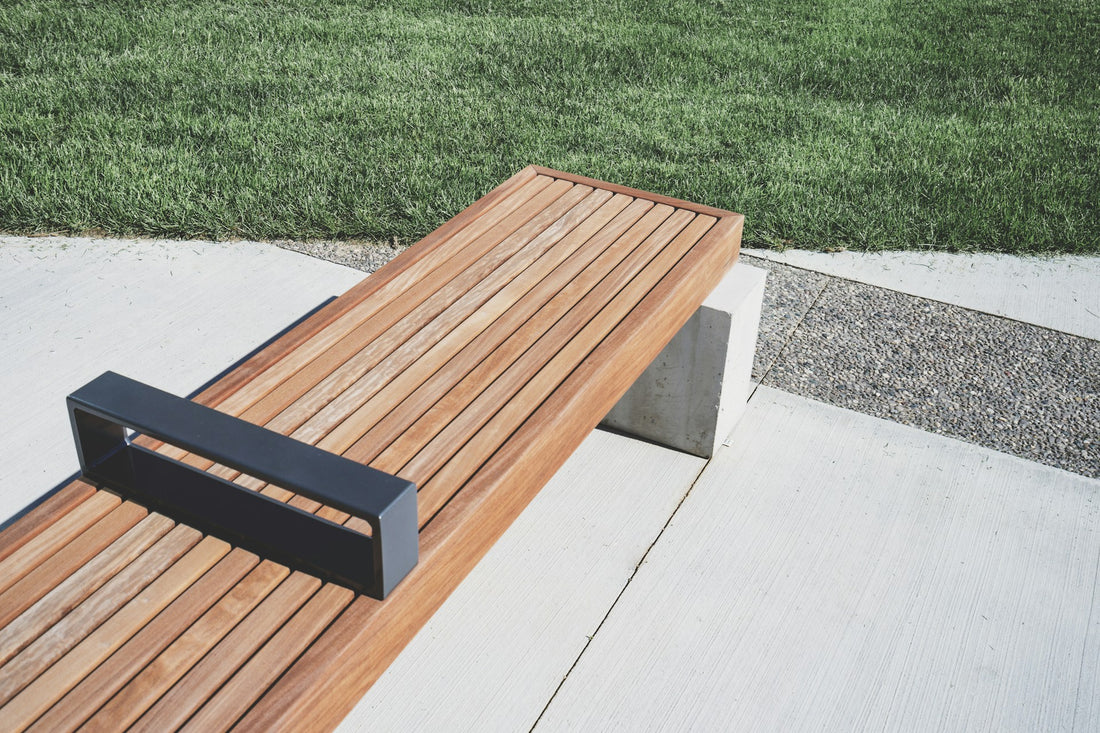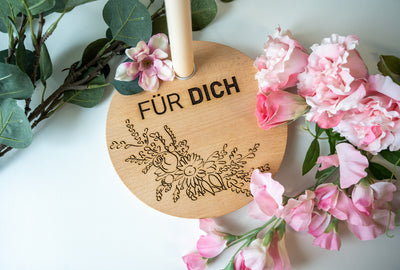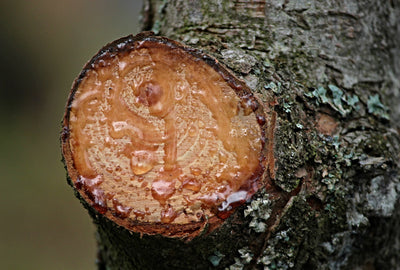Wood for outside: The optimal wood guide for outdoor use - your guide to longevity and style
Imagine yourself enjoying a warm summer evening in your beautifully landscaped garden. The heart of this idyll? Of course, the carefully selected wooden elements; weather-resistant wood that characterizes your outdoor area. From sturdy outdoor furniture to inviting patios to stylish fences, choosing the right wood is crucial to creating not only an aesthetic but also a long-lasting outdoor experience.
Your guide to the best types of wood for outdoors: durability and aesthetics combined
When choosing wood for outdoor use, choosing the right type of wood is crucial. You are looking for weather-resistant wood that is both functional and visually appealing. Here we introduce you to the most common types of wood for outdoor use, explain their properties and show you the advantages and disadvantages.
Teak: The epitome of luxury and durability

Teak is popular not only because of its impressive appearance, but also because of its exceptional durability. As weather-resistant wood par excellence, tropical wood can withstand extreme weather conditions without rotting or warping. Its high oil content protects it from moisture, insects and fungal attack. The downside? Teak is one of the more expensive options on the market.
Oak: strength and tradition

Oak is a symbol of strength and longevity. This robust wood for outdoor use is characterized by its density, which makes it particularly resistant to weather influences. Over the years, oak develops an attractive, silver-gray patina that gives it a rustic charm. However, oak also needs regular care to maintain its beauty.
Douglas fir: price-performance winner
Douglas fir is an excellent choice if you are looking for a high quality, but more cost-effective wood for outdoor use . It offers good durability and is more resistant to rot than many other softwoods. However, it requires regular care to maintain its colour and structure.
Larch: Natural and charming

Larch wood, known for its warm colouring and distinctive grain, is a popular choice for garden furniture and structures. It is naturally resistant to decay, is an overall weather-resistant wood, and requires less maintenance than other types of wood. A disadvantage of larch is its susceptibility to fluctuations in humidity, which requires regular inspection and maintenance.
Each of these types of wood offers unique benefits for your outdoor space. Choosing the right wood is an essential step in maintaining the beauty and functionality of your garden for many years.
Mastering the effects of the weather: This means your outdoor wood stays beautiful and stable for longer
The durability of outdoor wood depends on its ability to withstand different weather conditions. Rain, sun and frost are the main factors that affect the lifespan of outdoor wood. But with the right care and treatment methods, the lifespan of your wood can be significantly extended.
Rain: The Humidity Test
Rain is one of the biggest challenges for outdoor wood. Moisture can lead to mould, rot and warping. To prevent this, you should ensure that your outdoor wood is properly sealed. Regular treatment with wood preservatives that protect against moisture is essential. Make sure that water can drain easily and does not collect on your wooden furniture or structures.
Sun: protection from the rays
The sun bleaches the wood and causes it to become cracked and brittle. Here, it is important to treat weather-resistant wood with UV-protecting glazes or paints. This measure not only preserves the colour of your wood, but also extends its lifespan. Additional shade from plants or shade sails can also help reduce solar radiation.
Frost: Resistance to cold

Frost and cold can make the wood brittle and lead to cracks. It is important to protect your outdoor wood well, especially in the winter months. Check that your wood is sufficiently impregnated to protect it from moisture that could freeze and damage the wood. If possible, store your wooden furniture in a dry, covered area.
In summary, it is crucial that you regularly maintain and protect your outdoor wood. This is the only way to ensure that your wooden elements in the garden or on the terrace retain their beauty and functionality for years to come. Investing in quality care products and regular maintenance are key to preserving the natural beauty and durability of your wood.
Sustainability in focus: Choose environmentally friendly wood for outdoors
Sustainability plays an important role when choosing wood for outdoor use. Choosing environmentally friendly wood species and certified sources not only helps protect the environment, but also ensures that you receive high-quality, weather-resistant wood. Here are important aspects you should consider:
- Sustainable wood sources: Make sure that the wood comes from sustainable forestry. Certifications such as FSC (Forest Stewardship Council) or PEFC (Program for the Endorsement of Forest Certification) are a reliable sign that the wood was obtained in an environmentally friendly manner. These certificates guarantee that the forests from which your outdoor wood comes are managed responsibly
- Reducing the ecological footprint: Choosing locally sourced wood can help reduce transportation costs and therefore CO2 emissions. This is an important step in minimizing the ecological footprint of your wood selection
- Longevity and recyclable: Another advantage of sustainable, weather-resistant wood is its longevity. Woods that last longer need to be replaced less often, reducing the need for new resources. In addition, many environmentally friendly types of wood can be recycled at the end of their life
- Support responsible practices: By choosing environmentally friendly wood, you support companies that are committed to sustainable forestry. This promotes an environmentally conscious industry and helps sustainable practices in wood production become standard
Choosing environmentally friendly types of wood and sustainable sources is an essential step in both protecting nature and ensuring that your outdoor wood is both aesthetically and functionally impressive in the long term. By choosing consciously, you are making a contribution to environmental protection and at the same time enjoying the benefits of high-quality, weather-resistant wood.
Economy meets quality: invest wisely in wood for outdoor use
Cost plays an important role when choosing wood for outdoor use. Weather-resistant wood varies in price depending on the type and quality. For example, teak, known for its exceptional durability and resistance, costs around 30 to 50 euros per square meter. Oak, which is also very durable, costs between 20 and 40 euros per square meter. Cheaper alternatives such as Douglas fir or larch can cost you between 10 and 25 euros per square meter.
Although the initial outlay for high-quality, weather-resistant wood such as teak or oak is higher, this investment pays off in the long term. Such woods require less maintenance and last longer, eliminating the need for frequent replacement or repairs. This leads to lower overall costs over the life of the product.
In short, opting for a more expensive but high quality outdoor wood is a wise investment. It ensures the longevity and beauty of your outdoor space and saves money in the long run by reducing the frequency of maintenance and replacement.
Your guide to durable and stylish outdoor wood

Choosing the right wood for outdoor use is crucial to the longevity and aesthetics of your outdoor space. Weather-resistant wood such as teak, oak, Douglas fir or larch not only offers you visual enrichment, but also guarantees resistance to weather influences. Investing in sustainable, high-quality wood species pays off in the long term by minimizing the frequency of maintenance and replacement. In short, the careful selection of wood for outdoors ensures you a permanently beautiful and functional outdoor experience.



